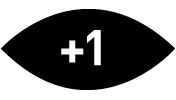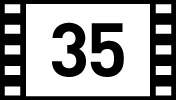

Greystoke was one of 1984’s most notorious releases. It wasn't one of the year's biggest bombs nor one of the year's most critically lambasted pictures; it was simply the film with the most negative press around it. This was true in 1984, but the stories about the troubled production and the bad feelings it generated have now completely eclipsed the film itself. After dozens and dozens of Hollywood movies made from Edgar Rice Burroughs' pulp fiction story about a man-child raised by apes who becomes lord of the jungle, this was to be a prestige, big-budget version of the oft-told tale. "Merchant Ivory's Tarzan" is how it's rather snidely thought of, though that hardly seemed like a bad pitch at the time and, frankly, still doesn't. The picture is not as refined as one of Ismail Merchant, James Ivory, and Ruth Prawer Jhabvala's iconic literary adaptations, but it's still quite entertaining. Despite being a nightmare of a movie for almost everyone involved, it was a sizable hit that scored with most critics and racked up several Academy Award nominations.
The project was the brainchild of Chinatown screenwriter Robert Towne. The legendary, Oscar-winning writer had been quietly crafting this magnum opus throughout the late '70s and planned to make it his directorial debut. As the legend of the script grew and grew, so did its page count. By the early 1980s, Towne had completed just the jungle half of the screenplay, which was apparently more than 170 pages with almost no spoken dialogue. He got the chance to direct a simpler story, his original sports drama Personal Best, in 1982. But when he went over budget on that picture, he sold his unfinished screenplay for Greystoke. When Personal Best faired poorly, Towne's dreams of directing this picture went out the window. Warner Brothers brought in director Hugh Hudson, who had helmed the surprise 1981 runaway hit Chariots of Fire. Dreaming of another highbrow box-office event like Chariots, the studio gave Hudson a sizable budget and sent him on his way. Towne hated the final film so much that he took his name off the picture and, as was the right of screenwriters guild members, replaced it with a pseudonym. He chose his dog's name, P.H. Vazak, so when the film was nominated for Best Adapted Screenplay, the dog's name was listed there, too.
French actor Christopher Lambert won the title role over the other main contenders, Julian Sands and Viggo Mortensen, because without his thick glasses, Lambert had a hard time seeing, and Hudson felt his odd crosseyed look made him appear sympathetic—but it probably made it hard to swing from vine to vine. For the role of Jane, Hudson wanted to cast against the traditional buxom blond type and hired model Andie MacDowell based solely on a picture of her on the cover of a fashion magazine. Jane, the ward of Tarzan's grandfather, the 6th Earl of Greystoke, is meant to be an American, but MacDowell's strong Southern accent was such an odd fit among the rest of the English cast that Hudson hired Glenn Close to revoice MacDowell. At the time, neither actress was anywhere near as major and recognizable a star as they later became, so the dubbing was not all that distracting. I wouldn't have known about it at the time were it not for all the articles that came out before and after the movie was released. This type of vocal recasting was not at all an uncommon practice in international cinema at the time, but this was the first time it got such major coverage in the press. MacDowell was devastated, believing, perhaps correctly, that her character's revoicing had as much to do with her performance as her accent. She immediately started taking acting lessons and came back like a house on fire a few years later as a lead character more perfectly suited to her in Steven Soderbergh's sex, lies, and videotape.
With Tarzan and Jane played by unknowns, the movie stars that sold this picture were the great British actors Ralph Richardson and Ian Holm. Richardson is weird and wild in the role of Tarzan's doddering old grandfather. He died just after shooting and was nominated posthumously for Best Supporting Actor—making this movie a fun trivia question: what movie saw both a dog and a dead guy nominated for Oscars in 1984? Holm, playing Capitaine Phillippe d'Arnot, the Belgian explorer who discovers John Greystoke in the jungle, teaches him the ways of man, and brings him back to his ancestral home in England, makes the most of his role. Capitaine Phillippe is the principal supporting character of this movie, and Hudson relied on Holm to direct many of the other actors while he worked with the camera crew. Holm is probably the one person who loved working on Greystoke.
Towne had envisioned making the film with actual apes, but no one thought that was practical. Producer David Puttnam, who had made Chariots of Fire with Hudson, had brought on special make-up effects creator Rick Baker, winner of the very first Best Makeup Oscar for An American Werewolf in London in 1981. Baker had been an assistant to pioneering prosthetic makeup effects veteran Dick Smith on The Exorcist and played the title role in the 1976 remake of King Kong. All his life, he'd been fascinated by apes and actors who build ape suits for movies, like the legendary Philippino actor and make-up designer Charles Gemora. Baker's lifelong dream had been to create the most realistic gorilla suit in film history. Believing this was his chance, he threw himself into the task of creating Tarzan's adoptive mother. But, as the story goes, when he arrived on location in the jungle with this incredibly complex animatronic suit, which was his pride and joy; Hudson chose to film the scene where Tarzan's mother is shot with multiple arrows as the first shot in the production. The suit never worked properly again after getting riddled with arrows, compromising the character for the rest of the filming. Baker was apparently so distraught by this turn of events that he almost gave up working in movies altogether. But fortunately, he didn't. His work was again nominated by the Academy (the 2nd of his 11 nominations and 7 wins for Best Make-up), and his ape suites were, and remain, the most realistic ape characters in the pre-CGI era (arguably in the post-CGI era as well). Baker and the actors, acrobats, and dancers who play the ape characters in Greystoke do a phenomenal job of creating a natural verisimilitude while still providing the anthropomorphized qualities required for the story.
Puttnam was another big name who jumped ship early in this production. He left the project before shooting began, believing that shooting an effects picture in the jungle was going to be far too difficult. He went off to make the vastly superior '80s pictures Local Hero and The Killing Fields, and Hudson served as his own producer. Puttnam was right about shooting in the jungle; even the brilliant and inventive cinematographer John Alcott (Barry Lyndon, The Shining, Vice Squad, and The Beastmaster) had trouble lighting the characters when shooting in western Cameroon's Korup National Park. Hudson moved the project to the Star Wars stage at Elstree studios in London, and Production Designer Stuart Craig (The Elephant Man, Gandhi, The Mission) designed jungle sets that match perfectly with the location shooting. The film also features some obvious but elegant matte paintings by the one and only Albert Whitlock.
Greystoke is far better than its reputation. It's one of those films that suffers from the "what if" a true auteur had made it question, with folks contemplating what it might have been had Towne been able to follow through with his vision. But it's difficult for me to imagine this concept being pulled off any better than the film that was made. Hudson and legendary film editor Anne V. Coates (Lawrence of Arabia, Murder on the Orient Express, The Elephant Man, Ragtime) keep the film alive and engaging at every turn. The scenes set in Scotland are every bit as intriguing and occasionally silly as those set in the jungle. One can never escape the pulp roots of Tarzan; the concept of a man raised by apes who grows up to lord over them is tinged with the typical attitudes of the era Burroughs wrote in. But something about the story will forever fire the imagination of movie-goers.
Trouble production stories aside, this big-budget, highbrow telling of Edgar Rice Burroughs' oft-filmed pulp fiction story about a manchild raised by apes is brought to life by Hugh Hudson, John Alcott, Anne V. Coates, and a solid cast of actors in period garb and amazing Rick Baker apes suites.









